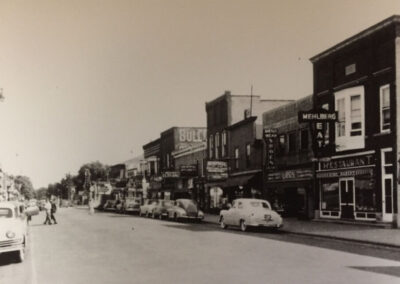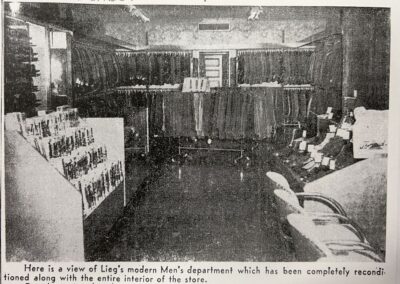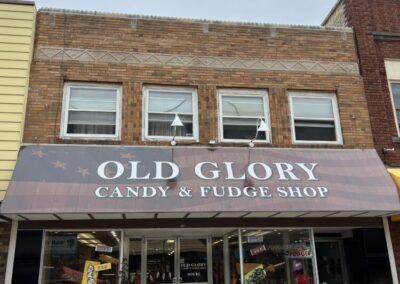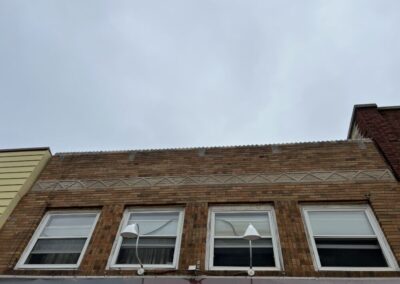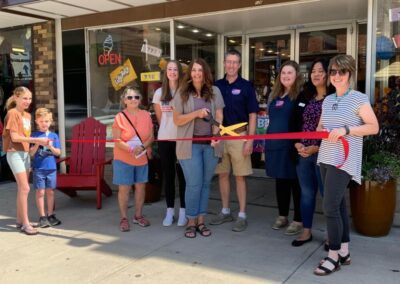Location
Photo Gallery
A Brief History
The Lieg Building
126 S. Main Street
Shawano, WI
The A. Lieg & Son business began in a store located at 207 N. Main Street in Shawano Wisconsin. In 1895, Anton died and the store was reorganized, calling it J. A. Lieg & Company. In 1901, for the Lieg business, a modern brick building was erected at 201 North Main Street. Lieg moved out in 1921, the company was dissolved and the building sold. Later, furniture buisineses occupied the building. Both buildings at 201 and 207 N. Main Street are still standing in Shawano.
In 1924, John Lieg and his brother, Joseph purchased the property at 126 South Main Street and opened a store. The business was reorganized in August 1933 and named, J. A. Lieg Company Inc. where John Lieg, along with his daughter and two sons, John Jr. and Bernard operated the business. Operation of the firm gradually passed to John Jr. at the death of his father in 1937.
There is a judgment recorded in September 1933 between Liegs and Mehlbergs Bakery which was next door to the south. The judgement mentions the proposed construction of a new building by Lieg on the property at 126 S Main. This building was built by Fred Lemke and C.C. Felts, both local contractors in Shawano.
In this new, modern brick building, John A. Lieg Sr. formed the J. A. Lieg Co. with his two sons, John A. Jr. and Bernard. It continued operation until 1940 when John A. Jr. became the sole operator calling the store “Lieg’s.” For 98 years, when John Lieg retired in 1966 and the store closed for the last time, the Lieg famly had one of the longest family owned businesses in Shawano. The Lieg Family owned the building until 1976. Built in 1933, this is the third and last building that was the home of a Lieg business. Since its sale, the building has been the home of several buinesses include women’s fashions and a candy store.
From the 1999 National Register of Historic Places Registration application:
This building has predominately original or historic features, and is one of the most striking on the block. The two-story, four-bay facade features a concrete stringcourse above the second-story windows with Art Deco-inspired chevrons across its length. The facade’s cornice is delineated by a thin band of concrete molded with a line of exposed points projecting upward, and the building’s brick corner piers are slightly beveled from the cornice to the lower edge of the stringcourse. The four second story windows are nearly square, with one-over-one double-hung glazing in plain surrounds. They are protected by single-pane storm windows. The building has an applied storefront of bright green structural glass, which covers the areas traditionally occupied by the storefront’s piers, transom and signage area between the transom and the sills of the second-story windows. On the piers, the panels are roughly one-and one-half feet in width and slightly longer, and are separated from each other by narrow strips of light green structural glass set in thin metal strips. The horizontal members across the upper reaches of the storefront are roughly the same width but twice as long; several are butted end-to-end to span the facade with no intervening treatment. This upper storefront facade consists of three sets of wide dark green panels identical in color and width to those below, elongated as described previously. These are separated from each other by two similar bands of the light green structural glass in narrow metal frames. The entire glass area of the storefront is surrounded by a plain, wide aluminum frame. The dark green glass panels are smooth and semi-reflective, while the narrow light green strips have a subtle texture and are not reflective. The display area consists of single-pane glass display windows set flush with the surrounding structural glass and placed on either side of a pair of non-historic inset aluminum doors; display windows set at a perpendicular angle extend from the building’s facade to the entry. A single, non-historic aluminum and glass door is inset from the facade between the southern pier and the adjoining display window; this door accesses the second floor, which historically held offices. Both sets of display windows on either side of the central entry have non-historic brick bulkheads. A non-historic, flat, corrugated plastic awning extends over the sidewalk immediately above the display windows. The structural glass facade is the only one of its type in the historic district, and, although a somewhat jarring juxtaposition with the building’s more restrained upper reaches, it appears to be either original to the building or to date from within a short time of its construction.

